Experiential learning sounds like a fancy term, but it really just means learning by doing. Educational theorist David A. Kolb was the first to use the phrase and believed that we learn the most through experiences.
You could argue that “learning by doing” is open to interpretation. And it is. To better understand experiential education, picture an engaged student creating, acting, playing, or participating in an activity. It’s a much different scene than that of a student sitting at a desk and listening to a lecture.
It turns out that research supports learning actively. Here are a few reasons why it works. (Stick around for a few activities, too!)
5 benefits of experiential learning

1. Improved grades
Research shows that kids sitting through traditional lectures are 1.5 times more likely to fail than those who take part in active learning. Let’s flip that pessimistic stat to “Experiential learning can positively influence grades!”
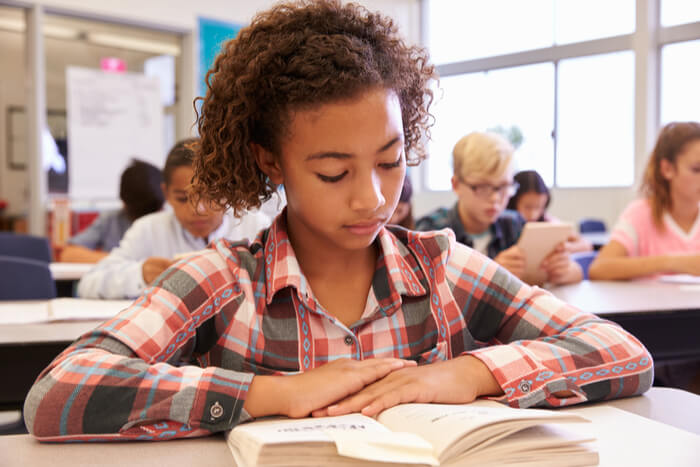
2. A deeper understanding of content
Previous evidence has found that students who take part in experiential learning have a deeper understanding of classroom material. Why? Because experiential education requires you to undergo a process and transfer knowledge. And according to the Association of American Colleges and Universities, that “transfer of knowledge requires deep understanding.”
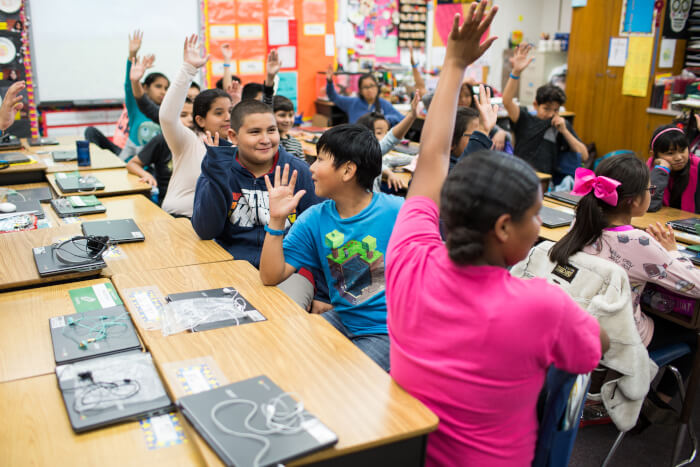
3. Increases student engagement
This benefit might seem obvious. Think about it: Would your students be more engaged reading about pioneer times or making butter and rope as the pioneers did? Students are much more eager to get up out of their seats and participate in activities that get them involved. Nobody enjoys sitting behind a desk for hours on end and listening to one instructor after another, or flipping through pages of textbooks. That’s not how people learn!
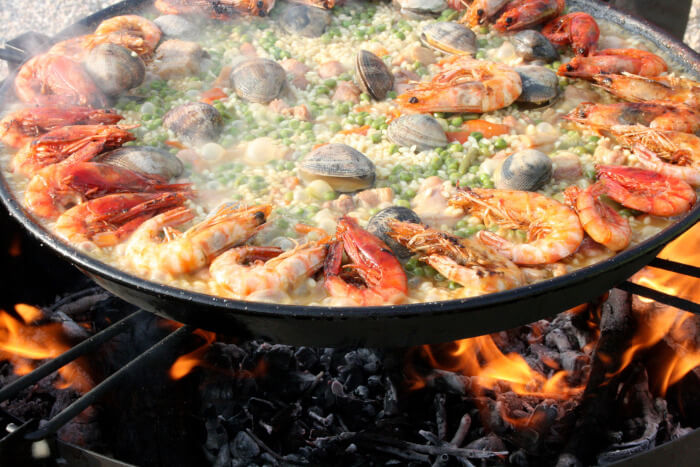
4. More relatable learning for students
Experiential learning helps students associate new concepts with things they already know. These connections through experience are much more resilient and often more relatable than if students were to simply read a book or listen to a lecture. For example, students could deepen their understanding of ethnic cuisines by reading about food in different cultures and then cooking one of the dishes that they read about.

5. It encourages critical thinking skills
Active learning helps students analyze and solve problems. It also forces them to participate in the decision-making process instead of merely following a guide or receiving instruction from others.
7 awesome experiential learning activities
There are countless more benefits to active learning, but you may also want to know tangible ways to integrate it seamlessly into your classroom.
So here are a few experiential learning activities that will get your kids engaged.

1. Build a triangular dome
In a previous post, we mentioned Nature’s Classroom an outdoor education program that offers hands-on classes and experiential learning opportunities. In one of their neat activities, they have students create a dome out of paper triangles.
The process is simple! Kids tightly roll up newspaper pages and then form triangles out of them. Next, they attach all the triangles to each other to create a dome-like structure that resembles your regular jungle gym.
Okay, you can’t hang upside down on it, but the activity teaches spatial recognition, geometry, and teambuilding skills! Plus, kids are amazed by the fantastic dome they created with only newspaper and tape.

2. Explore new worlds with Classcraft
Classcraft is an interactive gamified platform that allows students to create avatars and complete specific learning goals designed by their teachers.
The program lets students take an active role in their curriculum and play (there’s that experiential bonus word!) in a fantasy world that gets their creative juices flowing.
The end result? Classcraft immerses students in experiential technology and gets them excited about learning.

3. Put on a play
One of our previous posts talks about the positive effects of putting on a play with your students. In fact, a full-blown play was one of the most experiential units I ever taught.
The kids wrote the production and then modernized and acted out a classic work each year. This unit demonstrated experiential learning at its finest!
But if a play sounds like too much drama, consider adding role-playing and/or small skits to your curriculum. These activities require little planning and can cater to any subject.

4. QR Scavenger Hunt
Traditional scavenger hunts are fun experiential activities, but consider trying one with a technological twist.
You may be familiar with QR codes that you scan on your smartphone to connect to a website. But did you know that you can create a scavenger hunt with them, too? This activity does take a little bit of prep, and you’ll have to download QR codes from a site such as this one.
I used this engaging learning activity to introduce students to my classroom. I would download a QR code of a bookshelf image, print it, and tape it to my wall. Students would start at that code, scan it, and then see the image on their phones.
That would lead them to the bookshelf, where there would be another QR code that they’d have to scan. This time, it would lead them to a world map. And so on.
Talk about a fun, interactive way to get kids comfortable with your classroom environment! You could also customize this QR code scavenger hunt for any subject.
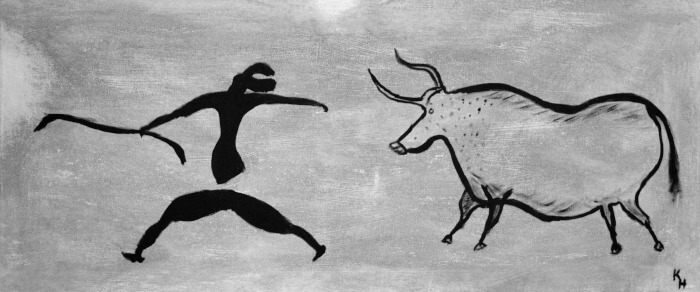
5. Cave painting
Before obtaining my master’s in education, I was an art history major, and I loved learning about the very old Lascaux cave paintings. Then, when I became a social studies teacher, I realized those cave paintings were actually quite relevant to my curriculum on ancient civilizations.
There’s a lot of history when it comes to caves, so I thought what better way to integrate my art history experience than with a social study unit on them?
I decided to have students create their own dyes that were actually used historically. They used charcoal for black, boiled moss for green, and even beet juice for a vibrant purple. Then, the kids would find a rock and paint images based on a historical cave-painting style. Sometimes we involved the art teacher and designed a co-teaching unit, too!
I found that this hands-on activity with cave paintings stuck in the kids’ minds much more than if we had just learned about them or looked at pictures in a textbook. Reading about these works AND experiencing them formed significant connections.
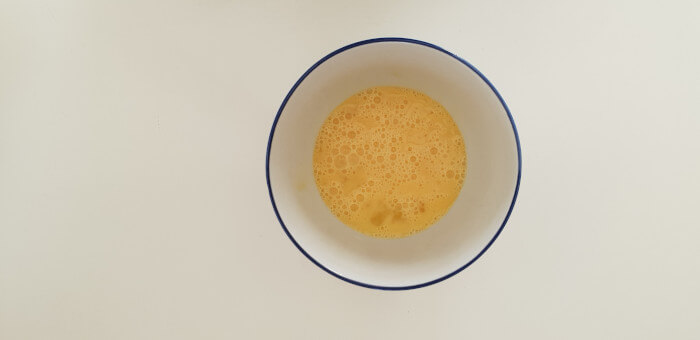
6. Make that butter and rope
Younger kids in particular love to get messy and make stuff — so why not teach them how pioneers made things from scratch?
One fun task is making butter. All you need is heavy cream and baby food jars. Yes, of course, the pioneers didn’t have baby food jars, but the process was similar. Mention that pioneers would probably use a metal container or a butter churn. (I just never had either handy.)
A lot of kids don’t know that all you have to do is shake the baby jar of heavy cream for five minutes, and then you have the most delicious butter. Seriously, Land O’Lakes doesn’t compare!
Kids were always amazed by this process. Then, we’d discuss how the pioneers would also have to milk a cow, which led to a lengthy discussion about food processes and how easy we have it nowadays.
Plus, they were able to take their creation home and put some “class-made” butter on their toast the next morning!
7. Human alphabet
A lot of schools (and even major companies) are getting into team building. It supports social skills, problem-solving, and critical thinking.
Yes, team building itself deserves an entire post of its own. But for starters, we’ll keep things simple.
The human alphabet is a fun activity with little to no prep. You hop on a chair (they’ll love this) and tell the students that they have to form each letter of the alphabet by standing next to one another.
Then, you tell them to form the letter “A” and watch them scramble. You may see students struggling at first because everybody might be talking at the same time. Be prepared to offer time to pause, reflect, and ask what worked and what didn’t.
Then, if they’re still struggling, you may want to allow only one student to speak. Watch as they form those letters in no time!
Taking it all in
When I think back to my experiences in school, I don’t remember the majority of facts I memorized or read about. I just loved to learn! I was an English teacher, and I still thrive on reading and writing. But I believe that experiential learning reaffirms the texts we teachers enjoy.
Adding that element of learning by doing — along with the text and other traditional learning methods — reinforces ideas that stick in a student’s mind well beyond that one-hour lecture.
Hopefully, these activities are something you can use in your classroom and tailor to your specific subject!
Remember: Kids enjoy experiential learning — and when they enjoy school, their motivation increases. As I’m sure you know, a classroom of motivated students makes a teacher’s job much easier!
Photo credit: Lukas / Pexels.com
Personalized Learning


